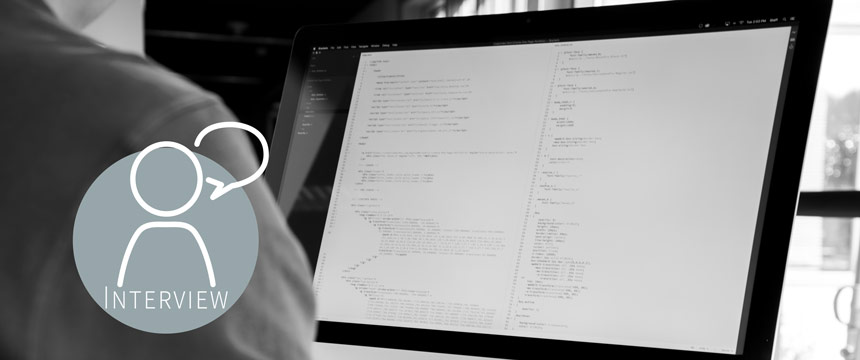
asked… I talked to Mr. Tomasz Truderung, the Head of the POLYAS research team about the use of blockchain and how the system could help to make online voting even more secure.
What is Blockchain and what is the motivation to use it?
Nowadays, we do so many things digitally. We buy clothes online, do online banking, and even buy stock using our computer. So technically those activities are not much more than just moving some bits around. We send some data over the Internet and hope that everything will be fine. And this is, most of the time, very convenient and efficient. Until we run into problems. Such as when two sides of a transaction disagree with each other. In this case, it may be difficult to resolve a dispute and settle what actually has happened. And this is where the notion of a Blockchain is very useful.
A Blockchain, basically, is a list of records everybody can access. Everybody can add a record to this list, but – and this is the main point – nobody is able to change or remove information that is already recorded, and nobody is able to tamper with it.
Furthermore it is very interesting how tampering-resistance is achieved in a blockchain. A blockchain is distributed in its nature. It is run by many parties or nodes, where essentially everybody can join the network and become a node. So, the idea behind a Blockchain is a combination of cryptographic techniques with a clever system of incentives ensuring that the nodes in the Blockchain play according to the rules. If they do not, their transaction will not be recognised by the remaining nodes and they will not be rewarded. This works fine as long as most of the nodes behave as expected. This is very interesting not only from the technical perspective, but also from the perspective of group dynamics. It seems like the majority of people accepts the rules, because they want to take part in the game.
Can you give me an example for the use?
A very popular example for the use of Blockchain is Bitcoin. It should be clear why having this public list of transactions that nobody can tamper with is so important in this case: when you receive a Bitcoin, you can be sure that it was not spent before and that nobody will take it back from you.
And why do you think there is so much hype surrounding Blockchain at the moment? Why is the whole world thinking that it is the most secure system?
First of all we have to define what “secure” means. If it means that we want to prevent the tampering of data, Blockchain is a good solution, since it makes the processes transparent and because it is not centralized. It is not owned and run by any single entity. So the most fundamental feature is the tampering prevention that Blockchain offers. And the hype is about the hope that now, with the blockchain technology, we can combine efficiency and convenience of digital activities with security and dispute resolution that blockchain gives us.
So should we then use it to make online voting more transparent, verifiable and secure too?
Due to those advantages, we indeed think about using a Blockchain system to complement our online voting software. It is just natural to think about that.
And why is it natural to think about using Blockchain for e-voting?
There are a lot of similarities between Blockchain and some aspects of online voting systems. For example the so-called secure bulletin boards which are used very often in modern e-voting systems. A bulletin board is supposed to be tamper-resistant and transparent. So the main rationale is very similar to the one for Blockchains. It could be said that a secure bulletin board is a kind of customised Blockchain run by a pre-defined set of parties. There are obviously also some differences. For example, a bulletin board, being a customised solution, will typically be more efficient and better suited for the particular application.
Nevertheless, the similarities are obvious and one can naturally wonder how this can be leveraged. One could think of using a blockchain instead of customised secure bulletin board or perhaps, more realistically, as a support for such bulletin boards, where the data from the boards is somehow mirrored in the block chain. This would increase the guarantees for tampering resistance: a voter who once makes sure that his or her ballot is recorded will have strong confidence that it will not be removed or changed.
So all in all, using a blockchain as a support mechanism to increase the transparency of the bulletin board is a very realistic idea. We also look at its potential for other, more sophisticated functions related to electronic voting. One could, for example, think of running whole elections system using a blockchain. We don’t think this is practical at this point, but the progress that is being made in the field is very exciting and we are closely watching how things evolve.